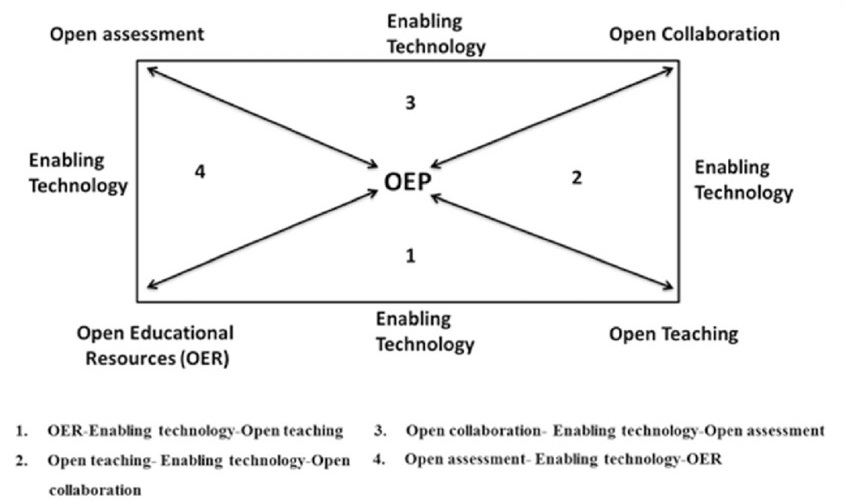
Open Educational Practices (OEP): The Future of Global, Collaborative Teaching
15th July 2025
Did you know that over 100 countries have adopted some form of Open Educational Practices (OEP), and the number is still rising?
In an era where knowledge knows no borders, educators across the globe are coming together to share, co-create, and innovate through open collaboration. From lesson plans to professional growth strategies, OEP is transforming how teachers learn from one another and empower their students.
As digital learning accelerates and equity in education becomes more urgent than ever, OEP offers a game-changing approach, making quality teacher development accessible, inclusive, and future-ready. Those eecuators who have pursued courses like Ofqual Accredited Diploma in Teaching and Learning, knows it really well.
However, in this blog post we will explore how Open Educational Practices are shaping a new era of teaching, where global connection fuels local impact.
What Are Open Educational Practices (OEP)?

Open Educational Practices refer to teaching and learning approaches that utilize Open Educational Resources (OER) and promote participation, accessibility, and collaboration. These practices extend beyond simply accessing free content, they invite educators to co-create, remix, adapt, and share educational materials for collective growth.
Rather than learning in isolation, teachers involved in OEP operate in open, participatory learning environments, where best practices, feedback, and innovations are shared freely.
Key Strategies for Implementing OEP in Teacher Training
1. Cross-Border Collaboration
Digital communities like Edmodo, UNESCO's OER Commons, and the Commonwealth of Learning provide platforms where teachers from different countries can connect and co-create. This helps foster cultural sensitivity and broader teaching perspectives.
2. Global Resource Sharing
Teachers can access and contribute to repositories of lesson plans, interactive tools, and videos. For instance, MIT OpenCourseWare and British Council TeachingEnglish provide free high-quality resources for educators worldwide.
3. Continuous Professional Development (CPD)
By integrating OEP into CPD, teachers remain updated with emerging pedagogy and technologies. Collaborative MOOCs(Massive Open online Course) and webinars enable peer-to-peer learning beyond borders.
4. License Awareness and Usage
Understanding Creative Commons licensing ensures teachers share responsibly and use resources ethically. Platforms like Open Washington guide educators in using and creating OER correctly.
How OEP Enhances Teaching and Learning
- Encourages Innovation
OEP opens the door of a global library of creative teaching strategies, tools, and content. Teachers can observe how peers in different regions tackle common challenges, be it classroom management, differentiated instruction, or tech integration and adapt those solutions for their own learners. This constant exposure to diverse pedagogical methods encourages experimentation and fuels innovation in everyday teaching.
- Fosters Equity
One of the most transformative aspects of OEP is its ability to level the playing field. By removing paywalls and sharing high-quality, adaptable resources for free, OEP enables educators from underserved communities to access the same professional materials as their global counterparts. This democratization of content promotes inclusive education, especially in regions with limited training budgets or infrastructure.
- Improves Engagement
When teachers incorporate global case studies, co-created lesson plans, and culturally diverse content, students become more invested in learning. OEP allows educators to design lessons that reflect real-world relevance and diverse perspectives, sparking curiosity, discussion, and critical thinking. In classrooms that use OEP, students often benefit from more personalized, interactive, and meaningful learning experiences.
- Boosts Confidence
OEP transforms teachers from content consumers to content creators and collaborators. Knowing that their shared materials can benefit educators around the world empowers teachers and builds professional pride. It also fosters a sense of belonging in a global teaching community, which in turn enhances job satisfaction and motivation to continuously learn and grow.
Real-World Applications: Success Stories
- Africa: The Teacher Education in Sub-Saharan Africa (TESSA) program empowers thousands of teachers with OER in multiple languages.
- Asia: India's SWAYAM platform and Japan's JMOOC offer open courses to educators to build digital literacy.
- Europe: Finland and the Netherlands promote OEP in national teacher training frameworks.
Final Thoughts
The global teaching community is evolving and it's becoming more connected, creative, and collaborative. Open Educational Practices are not just a trend, they are a transformative force reshaping teacher education worldwide.
Teachers who’s pursuing courses like OTHM Level 6 Diploma in Teaching and Learning, helping them to step out confidently into this open future. By embracing OEP, they build inclusive classrooms, support peer growth, and prepare students for a globally connected world.
The future of teaching is open. The future of learning is global. Are you ready to be part of it?
FAQ:
Q1: What are Open Educational Practices (OEP)?
A1: OEP refers to the use of open resources and collaborative teaching approaches that promote sharing, adaptability, and global teacher learning.
Q2: How does OEP benefit teachers?
A2: OEP allows teachers to access free, high-quality resources, collaborate with international peers, and improve their teaching through ongoing global exchange.
Q3: Is OEP suitable for teachers in low-resource settings?
A3: Absolutely. OEP promotes equity by making teaching materials freely available, ensuring educators in all contexts can access and share knowledge.
Q4: How can I start using OEP in my classroom?
A4: Begin by exploring platforms like OER Commons, Creative Commons, and open learning networks to access and share teaching content openly.
Written By : Ruchi Mehta




